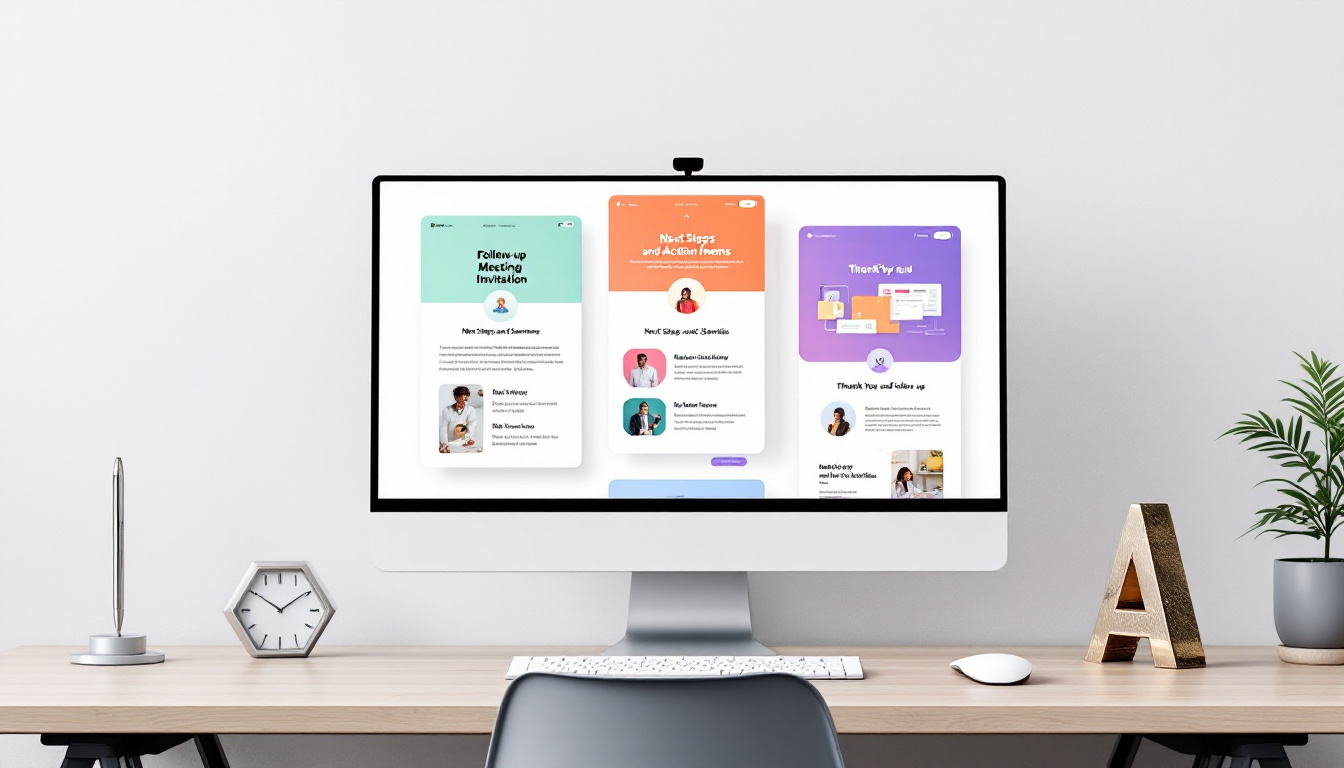In the competitive world of recruitment in 2025, knowing how to effectively follow up on an application after a first interview is a major asset for any ambitious candidate. The recruitment process is no longer limited to a simple initial exchange; it’s about establishing a dynamic and professional relationship, where the proper use of emails can really make the difference. Offering a reassessment of your application through a suitable email template not only reiterates your keen interest, but also demonstrates your proactivity and ability to communicate elegantly. In this article, discover how to structure these messages to maximize your chances and ensure you leave a positive impression at every step of the process.
Why an interview follow-up is crucial to strengthen your application in 2025
In today’s job market, where every detail can influence a recruiter’s final decision, application follow-up plays a strategic role. By sending an email after a first interview, the candidate demonstrates their sincere motivation, their ability to manage their professional communication, and their seriousness. For several years now, statistics have shown that a candidate who follows up carefully has a 30% greater chance of being selected, particularly because they stand out in a crowded environment.
Furthermore, in 2025, companies are valuing transparency and responsiveness. A simple, well-formulated message can clarify certain points raised during the interview or emphasize key elements of their profile. It also becomes a tool for readjusting their approach, for example by proposing a reassessment of their application if the recruitment process has not been completed within the expected timeframe.
The different types of emails for following up or requesting a reassessment
When interacting with an employer or recruiter after an interview, two main types of emails stand out:
- The post-interview thank you note: a short but effective message expressing gratitude and reiterating your key strengths.The follow-up email for a reassessment: a more proactive approach, aimed at obtaining an update or reaffirming interest when the response deadline has passed.
- Each of these templates should be adapted according to the situation and the tone of the initial exchange. The key lies in personalizing and ensuring clarity of communication. For example, a thank you note should address specific points discussed during the interview, while a follow-up email should emphasize your sincere commitment and availability. Email TypeMain Purpose
Ideal Time to Send
| Example of Key Content | Thank You | Express Gratitude and Strengthen Relationship | 24 Hours After the Interview |
|---|---|---|---|
| “Thank you again for this enriching discussion about project X. I remain very interested in joining your team.” | Follow-up | Get an Update or Reassess Your Application | 1-2 Weeks After the Announced Deadline |
| “I just wanted to know if you were able to follow up on my application. I remain motivated and available for any questions.” | Timing: When and How to Send Follow-up Emails | Timing plays a critical role in the success of your post-interview communication. Sending an email too soon can come across as unduly impatient, while waiting too long risks losing all impact. As a general rule, it’s recommended to send a thank-you note within 24 hours of the interview. If no response is received within the promised or expected timeframe, a follow-up should be sent within 1 to 2 weeks, to demonstrate your patience while remaining proactive. | To ensure you don’t forget these steps, use reminders or schedule these emails in advance by scheduling them to go live in your email or calendar. Personalization should be at the heart of each message: mention specific details of your interview to demonstrate your commitment and seriousness. |
How to Write an Effective Follow-Up Email for Reassessment
A good email template for proposing a reassessment of a candidate must follow several fundamental rules. The first rule is to remain succinct, professional, and courteous. Next, structure your message into three parts:
Background: Mention the date of the interview, the position you’re applying for, and a specific point raised during your discussion.
Clear Expression of Your Motivation: Reaffirm your interest in the position and indicate why you still believe you meet the requirements, emphasizing your key skills.
Call to Action: Invite the recruiter to give you their feedback or arrange a new meeting. Here’s an example of effective wording:
- “Thank you again for the interview on April 15th regarding the project manager position. Following our discussion, I would like to reiterate my strong interest in joining your team and contributing to the expansion of your business. I remain at your disposal for any further steps and hope to be able to demonstrate in person the value I can bring to your company.”Mistakes to Avoid When Following Up on an Application or Interview
- To maximize the effectiveness of your follow-up approach, it’s crucial to know the pitfalls to avoid. These include:Being Too Pushy: Sending multiple emails in a short period of time can give the impression of impatience or a lack of professionalism.
- Lack of Personalization: Using overly generic templates without specific reference to the interview can harm the credibility of your approach.
Forgetting to check spelling and grammar
: A message riddled with errors can lead to immediate rejection.
Not respecting the timeline
: Sending a follow-up late or before the recommended deadline can hurt your chances.
- By avoiding these mistakes, you will position yourself as a professional, proactive candidate who respects the codes of communication in 2025.Tools and tips to automate your application follow-up
- In an environment where speed and accuracy are essential, digital tools play a key role. Using candidate relationship management (CRM) software or email scheduling features in your inbox allows you to effectively plan your follow-ups. Here are some tips:Schedule automatic thank-you emails to be sent within 24 hours of an interview.
- Use pre-configured templates while maintaining a personalized feel for each message. Maintain a dashboard to track your follow-up schedule for each recruitment process.Use extensions like LinkedIn or specialized CRMs to automate part of your communication.
- ToolKey Features
Benefits
Candidate CRM
Personalized follow-up tracking
- Time savings, better organization
- Email automation software
- Schedule emails on a fixed date
- Timing compliance, clarity in the process
| Tracking tables (Excel/Google Sheets) | Manual or semi-automated management | Flexibility, instant visibility |
|---|---|---|



